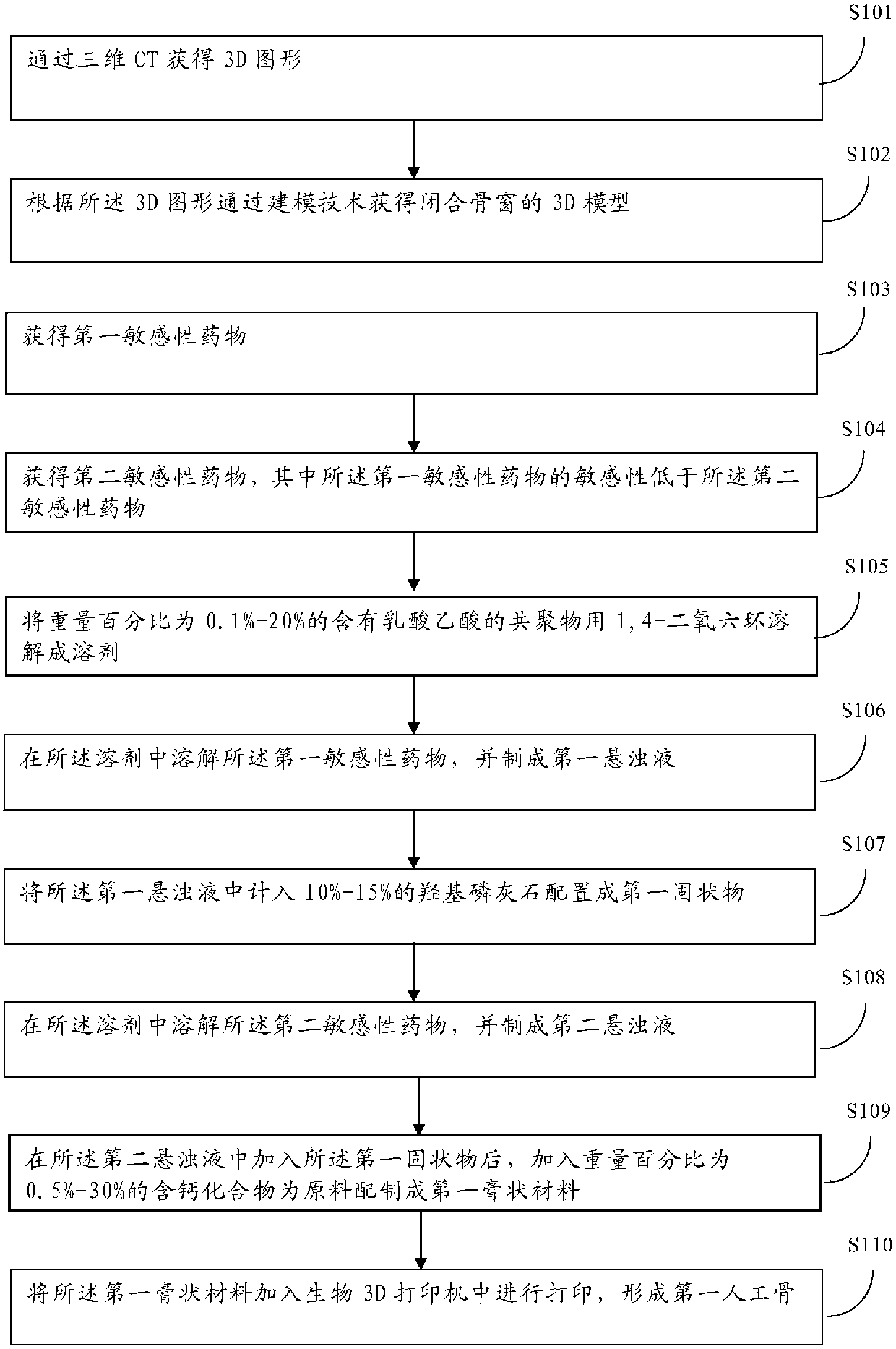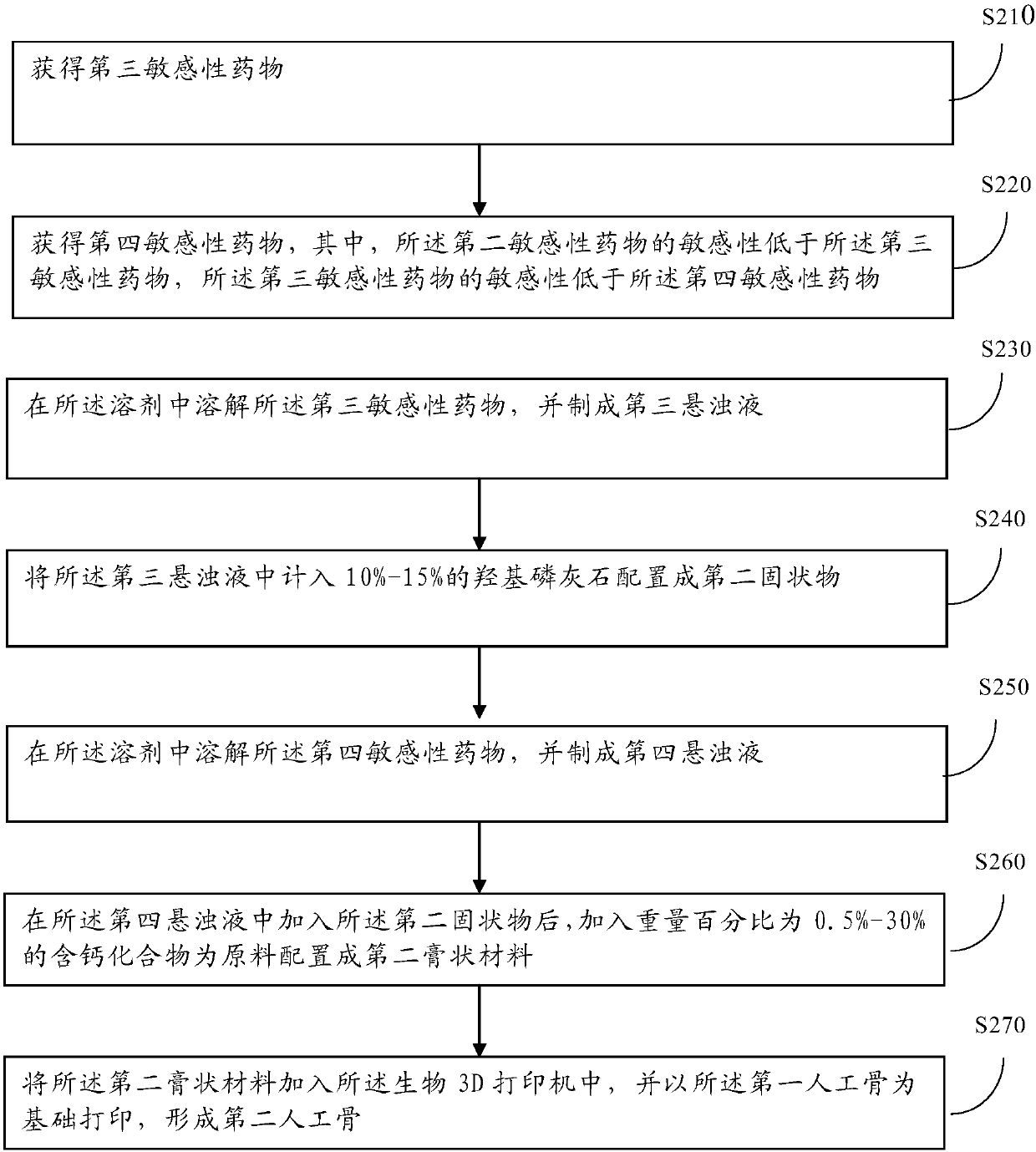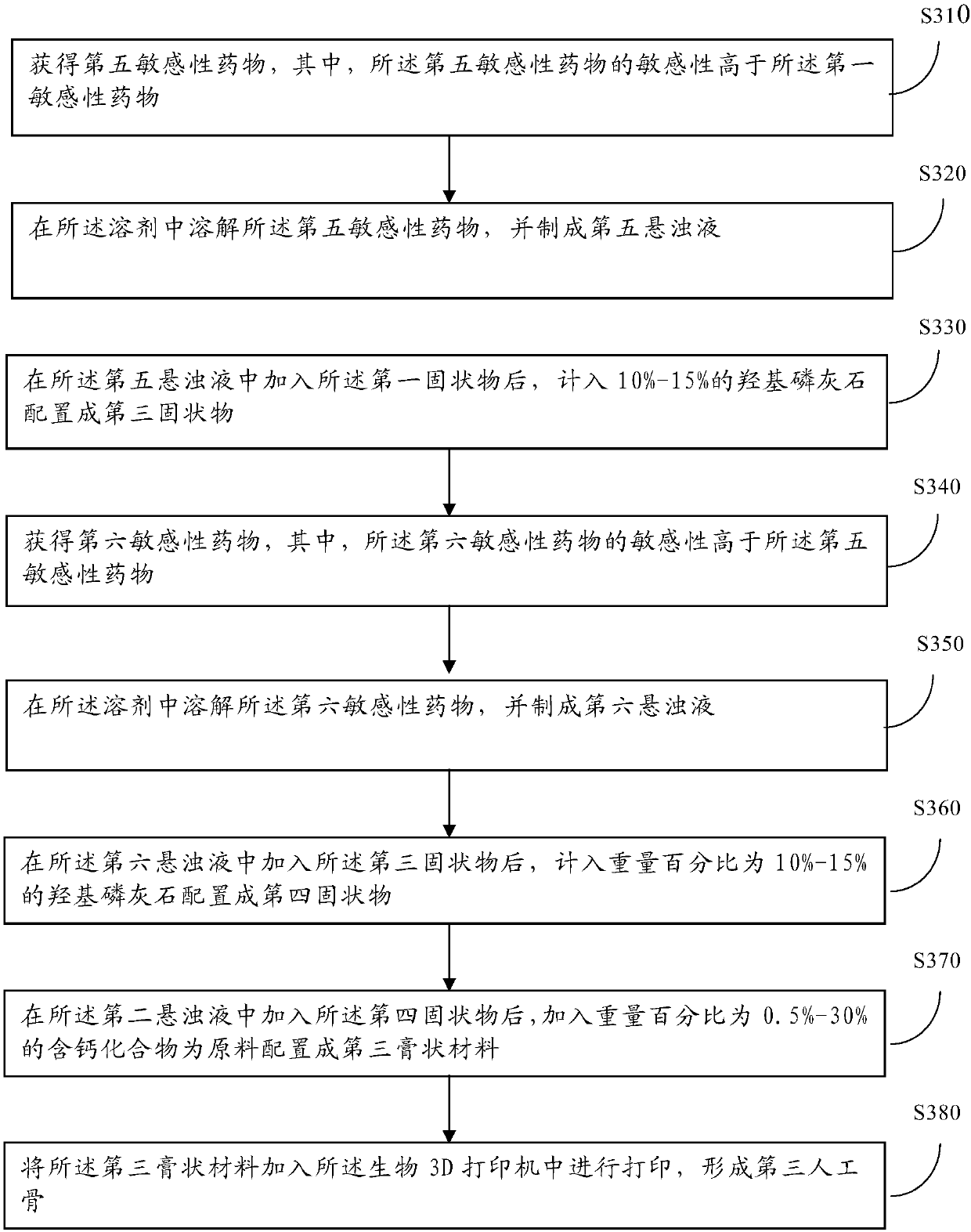Production method of 3D printed artificial bone
A 3D printing and 3D printer technology, applied in the medical field, can solve the problems of drugs staying in the parts that need to play a role, unable to meet the requirements of orthopaedic surgery, and increasing bone mass. It can achieve step-by-step medication, increase bone mass, and prolong sustained release. effect of time
- Summary
- Abstract
- Description
- Claims
- Application Information
AI Technical Summary
Problems solved by technology
Method used
Image
Examples
Embodiment 1
[0030] figure 1 It is a schematic flowchart of a manufacturing method of 3D printing artificial bone provided in the embodiment of the present application. Such as figure 1 As shown, the method includes:
[0031] Step 101: Obtain 3D graphics through 3D CT;
[0032] Specifically, by performing a three-dimensional CT on the affected part of the patient, a 3D stereoscopic image of the affected part can be obtained, and the above-mentioned 3D stereographic image can truly see the shape of the bones of the affected part. For example, a patient suffers from a bone tumor. After surgery to remove the bone tumor, there will be a gap in the affected bone. The gap depends on the size and shape of the bone tumor. It is not the same. Therefore, through 3D CT, a figure with the same shape and size as the patient's bone gap can be obtained.
[0033] Step 102: Obtain a 3D model of the closed bone window through modeling technology according to the 3D graphics;
[0034] Specifically, acco...
Embodiment 2
[0052] In order to realize the use of more sensitive drugs and further improve the sustained-release effect, the embodiment of the present application also provides a manufacturing method of 3D printing artificial bone, such as figure 2 As shown, the method includes:
[0053] Step 210: Obtain the third sensitive drug;
[0054] Step 220: Obtain a fourth sensitive drug, wherein the sensitivity of the second sensitive drug is lower than that of the third sensitive drug, and the sensitivity of the third sensitive drug is lower than that of the fourth sensitive drug drug;
[0055] Specifically, step 210 and step 220 can refer to the explanation of step 110 and step 120, the sensitivity of the second sensitive drug is lower than that of the third sensitive drug, and the sensitivity of the third sensitive drug Lower than the fourth sensitive drug.
[0056] Step 230: Dissolving the third sensitive drug in the solvent to make a third suspension;
[0057] Step 240: configuring the ...
Embodiment 3
[0065] In order to realize the use of more moderately sensitive drugs and further improve the sustained release effect, the embodiment of this application also provides a manufacturing method of 3D printed artificial bone, please refer to image 3 , the method includes:
[0066] Step 310: Obtain a fifth sensitive drug, wherein the sensitivity of the fifth sensitive drug is higher than that of the first sensitive drug;
[0067] Step 320: dissolving the fifth sensitive drug in the solvent, and making a fifth suspension;
[0068] Step 330: After adding the first solid substance into the fifth suspension, add the calcium-containing compound with a weight percentage of 5%-50% to form a third solid substance.
[0069] Step 340: Obtain a sixth sensitive drug, wherein the sensitivity of the sixth sensitive drug is higher than that of the fifth sensitive drug;
[0070] Step 350: Dissolving the sixth sensitive drug in the solvent to make a sixth suspension;
[0071] Step 360: After a...
PUM
 Login to View More
Login to View More Abstract
Description
Claims
Application Information
 Login to View More
Login to View More - R&D
- Intellectual Property
- Life Sciences
- Materials
- Tech Scout
- Unparalleled Data Quality
- Higher Quality Content
- 60% Fewer Hallucinations
Browse by: Latest US Patents, China's latest patents, Technical Efficacy Thesaurus, Application Domain, Technology Topic, Popular Technical Reports.
© 2025 PatSnap. All rights reserved.Legal|Privacy policy|Modern Slavery Act Transparency Statement|Sitemap|About US| Contact US: help@patsnap.com



